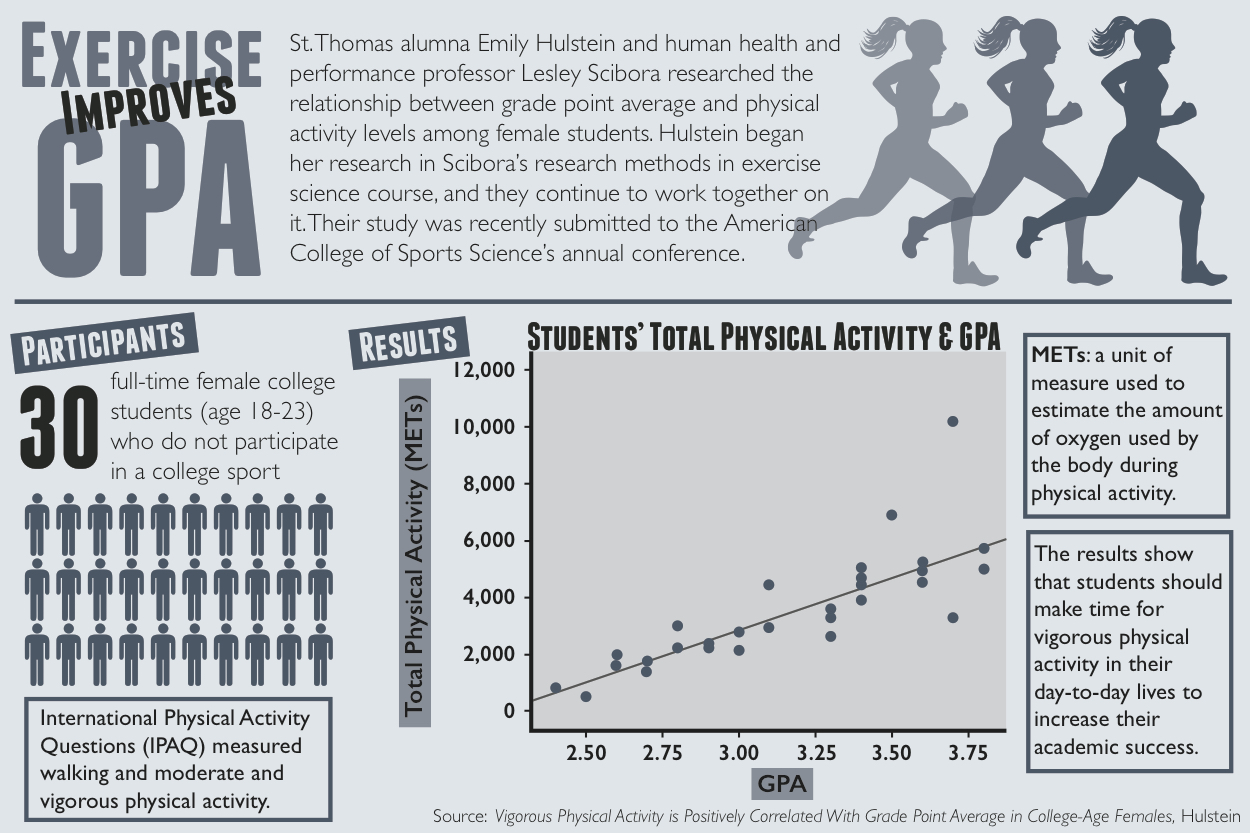
Students who hit the gym are more likely to have success hitting the books. According to a study conducted by St. Thomas 2014 alumna Emily Hulstein, students who spend more time each week working out vigorously are about 61 percent more likely to have higher GPAs.
During physical activity, the brain produces neurotransmitters at a more rapid pace than when inactive, Hulstein said, and these neurotransmitters allow the brain to store information while doing an activity, such as studying. Hulstein said this, in addition to the general health benefits of exercise, leads to improved academic performance.
“When you factor those kinds of things in … you can kind of see how the two come into play and see higher GPAs in students who work out more frequently,” she said.
Freshman Abby Starr, who regularly works out, said she is more productive with her schoolwork after exercising.
“Once you get into the idea that you’re like, oh, I’m actually going to do something beneficial to myself; then you’re kind of like, Oh, let’s do homework, too,” Starr said.
Health and human performance professor Lesley Scibora said she encouraged Hulstein to research a topic that not only serves an unmet need but also relates to her on a personal level.
“(Hulstein) became interested in ways healthy physical activity behavior could be promoted to college/university students,” Scibora said.
Hulstein said she studied this topic because it related to a large number of people, especially those in her age group.
“‘What would my friends make most use of?’ was kind of a question that we asked,” Hulstein said. “The biggest driving force was just that we wanted something that would really apply to the most amount of people possible.”
That is why Hulstein decided to research nonathlete females from Midwest colleges to keep a control group and to represent the general population.
“Athletes are going to exercise significantly more than nonathletes,” Hulstein said. “We chose nonathletes because more of the general population is nonathletic.”
Hulstein said she hopes that this will allow the St. Thomas community to better relate to her research and react to its results.
“That will hit closer to home, and they’ll see the validity of the study as well as the importance of what the results show,” she said.
While the results are clear, junior Tyler Pecha said, as a college student, it is difficult to find time to work out.
“I usually start out at the beginning of the year working out a couple nights a week, and then as soon as the first couple tests and projects come in, then it stops,” Pecha said. “There’s always homework to do.”
Starr said even if it’s difficult, students should take the time to work out, if only to take a much-needed break and reduce stress.
“It’s only 30 minutes of your day, which I think you need to take some time to yourself,” Starr said. “It’s just more of a stress reliever.”
Hulstein said dedicating a small part of the day to working out can have a positive effect.
“Just make that time. You could see that GPA bump,” she said.
Hulstein worked with Scibora to submit the research to an American College of Sports and Medicine conference. Moving forward, Hulstein said the two may replicate the research and work to publish their findings.
Rebecca Mariscal can be reached at mari2162@stthomas.edu.

